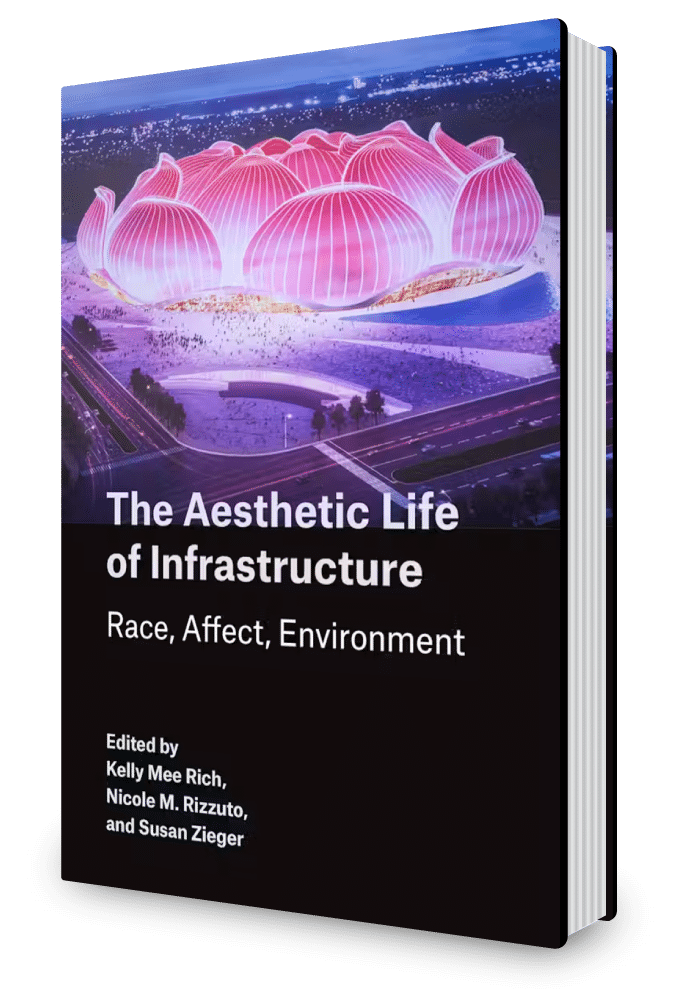
Title: The Aesthetic Life of Infrastructure: Race, Affect, Environment
Editors: Kelly M. Rich, Nicole M. Rizzuto and Susan Zieger
Formats: Hardcover, Paperback, Ebook
Pages: 224
Buy Now:
The Aesthetic Life of Infrastructure
Race, Affect, Environment
A critical reading of the unstable structures that organize biological and social life
This timely and radically interdisciplinary volume uncovers the aesthetics and politics of infrastructure. From roads and bridges to harbors and canals, infrastructure is conventionally understood as the public works that allow for the circulation of capital. Yet this naturalized concept of infrastructure, driven by capital’s restless expansion, is haunted by imperial tendencies to occupy territory, extract resources, and organize life. Infrastructure thus undergirds the living nexus of modernity in an ongoing project of racialization, affective embodiment, and environmental praxis. Rather than merely making visible infrastructure’s modes of power, however, The Aesthetic Life of Infrastructure brings literary methods to bear on the interpretive terrain, reading infrastructural space and temporalities to show that their aesthetic and sensorial experience cannot be understood apart from histories of production and political economies.
Building on critical infrastructure studies in anthropology, geography, and media studies, this collection demonstrates the field’s vitality to scholars working across the humanities, including in literary, visual, and cultural studies. By querying the presumed invisibility of infrastructure’s hidden life, the volume’s contributors revitalize ongoing literary debates about reading surface and depth. How, they ask, might infrastructure and aesthetics then function as epistemic tools for rethinking each other? And what urgency do they acquire in light of current crises that bear on death, whether biological, social, or planetary?
Praise
for The Aesthetic Life of Infrastructure
The Aesthetic Life of Infrastructure steps into this critical moment with propulsive force….
Interventions: International Journal of Postcolonial Studies
What is to be gained from paying aesthetic attention to infrastructure? As the Aesthetic Life of Infrastructure makes clear, a great deal. What rises to the fore is a more affectively attuned, historically engaged, embodied, and genre-specific understanding of the life of infrastructure.
American Literary History
a highly effective, admirably interdisciplinary study that also paves the way (one can never eschew metaphor entirely) for future work.
Modern Philology